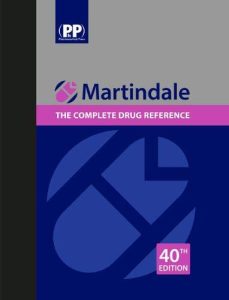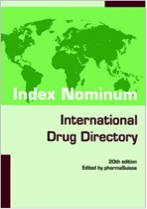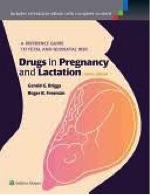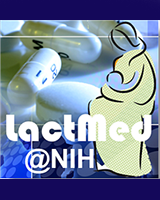Lesson 4: Specialty References: Drug Identification, Availability, International Names, and Pregnancy

You receive a message from Dr. Howard asking: “Can you help identify a long white pill with the imprint KU 181?”
Where would you go to find an answer to Dr. Howard’s question?
Specialty references are able to answer specific questions pertaining to pharmacy and pharmacotherapy.
In this module, we will review specialty references pertaining to:
- Drug identification
- Product availability and interchangeability
- International drug references
- Pregnancy and lactation
Drug Identification
Many of the resources outlined in Lesson 1 (eg, Micromedex, Facts & Comparisons) have online tools you can use to identify medications.
Drugs.Com
- Includes a Pill Identifier tool (“Pill Identification Wizard”) to help you identify pills
- Consumer-facing website with very little clinical information
- Typically not a go-to resource, but has a robust Drug ID tool that can be useful
Regardless of which identification tool(s) you use, always use two resources to identify an unknown medication.
Product Availability and Interchangeability
Facts & Comparisons e-Answers
- Covered in-depth in Lesson 1
- Available online via the HSL
- Each monograph includes details on product availability, including:
- Available dosage forms and product dose/concentration
- Market status (eg, discontinued, currently available, etc)
- Manufacturer details
- Excipient information (ie, non-drug components of the medication)
This is an additional tool available within our more general pharmacy resources
Drugs @ FDA Website
- Online resource available via the FDA
- Also available via mobile app
- Includes information about drugs that have been approved for human use in the united states
- Does not include information on vaccines, blood products, or gene therapies
- Can search by drug name (brand and generic) or by active ingredient
- Returns a list of currently approved medications in the United States, including approved dosage forms/doses
- Has links to current package inserts and links to FDA review documents
- Does not include off-label information or information about non-prescription medications
Approved Drug Products with Therapeutic Equivalence Evaluations – FDA
- Commonly known as the “Orange Book”
- Available online via the FDA Website
- Used to identify approved drug products and any equivalent generic medications
- Generic products in the orange book are assigned an equivalence code
- A code starting with “A” indicates the product is equivalent to a brand medication, and that it can be switched with the brand medication without prescriber (eg,physician) approval
- A code starting with “B” indicates the product is not equivalent and cannot be switched without a new prescription
- This resource does include select over -the-counter (OTC) products
Key resource for identifying ‘equivalent’ generic drugs for costly brand-name medications
List of Licensed Biological Products – FDA
- Commonly known as the “Purple Book”
- Available online via the FDA Website
- Similar to the Orange Book, the Purple Book can be used to identify biological products and biosimilar/interchangeable medications
- Includes vaccines, blood/plasma products, and other medications approved by the Center for Biologics Evaluation and Research (CBER)
- Also includes patent expiration and exclusivity information for biologic medications
Go to resource for identifying biosimilar or interchangeable biologic products
International Drug References
Martindale: The Complete Drug Reference
 Also known as just “Martindale’s”
Also known as just “Martindale’s”- Published yearly
- Offered through Micromedex, but not available in HSL’s subscription
- International drug information
- Limited information about herbal products as well as diagnostic agents, radioactive pharmaceuticals, and some veterinary products
- Pharmacopoeia listing of approximately 6,700 drugs throughout the world, including details of 180,000 proprietary preparations
Great resource for identifying alternatives to foreign medications.
 Index Nominum: International Drug Directory
Index Nominum: International Drug Directory
- Offered through Micromedex but not available in HSL’s subscription
- Created by the Swiss Pharmaceutical Society
- Information provided in English, French, and German translations
- Provides information on single active ingredients, synonyms, chemical structures and formulas, proprietary names, therapeutic class, and manufacturers
Great resource for identifying alternatives to foreign medications.
Pregnancy and Lactation
Pregnant and breastfeeding patients must be careful about medications and herbal supplements because they may pose risk to fetal development or lactation. In addition to using the references outlined below, all clinicians must consider the following questions when treating a pregnant/breastfeeding individual:
- What trimester is the patient in?
- Important because different medications have differing risks depending on development stage
- What is the indication for use?
- This is important in order to weight risk vs benefit of the medication
- Is the patient already taking the medication?
- This is important to determine whether the patient or fetus have already been exposed

Drugs in Pregnancy and Lactation
- Also known as “Briggs”
- Available online via HSL Web site and now available via Facts & Comparisons
- Evidence-based recommendations
- Monograph format
- Generic name
- Pharmacologic class
- Pregnancy risk summary
- Lactation risk summary
- Fetal risk summary
- Provides evidence-based assessment regarding in utero or breast milk exposure
- Animal literature is provided in cases where human literature is lacking
- Additional information about recommendations from organizations such as the American Academy of Pediatrics is provided
This is THE “go-to” reference for pregnancy exposure/risk questions.
LactMed
- Free resource available via the National Library of Medicine (NLM)

- Available online
- Comprehensive database of medications and other chemicals to which breastfeeding mothers may be exposed
- Monograph information includes
- Drug level/drug exposure in breastmilk
- Effect on breastfed infants
- Effect on lactation and breastmilk quality/quantity
- Additional data as applicable
- Regularly updated and maintained via the online interface
Let’s return to Dr. Howard, who as you may recall wants help identifying an unknown tablet.
What resource would you consult to answer Dr. Howard’s question? And what would be your response?
Questions
Use the scenarios provided to answer the following questions. Click Check Answer to compare your responses to the instructor’s answers.
1. A pharmacist calls into the Drug Information Center wanting to know in which countries ritanserin and ketanserin are available. You have never heard of these medications before.
2. Natasha is a 28-year-old female patient who is pregnant for the first time (currently in her first trimester). She comes into the pharmacy complaining of nasal congestion/stuffiness and asks if it is safe to take Sudafed® to help clear her sinuses. She figured it would be safe because it is available without a prescription. Which tertiary reference could you use to answer this question and why?
3. A doctor writes your patient a prescription for Zestril 20 mg tablets (brand name). This medication is very pricey, and the patient asks if they can have the medication filled as a generic. As the pharmacist, are you allowed to fill the prescription with a generic product?